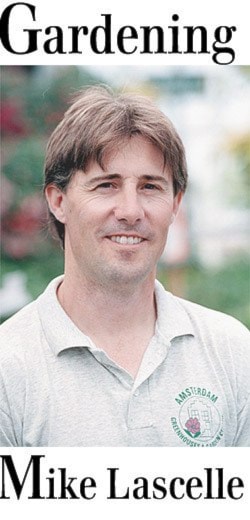The little girl in the middle photo is my youngest daughter, Madeleine, when she was about four years old – we had just spent the day at VanDusen Botanical Gardens, where I was doing some photography for an upcoming magazine article.
Truth be told, I wasn’t a very good parent that day as I was preoccupied with work.
Maddy’s photo was the last shot in the roll (back in the pre-digital days) and the reason she’s beaming is because it was the only time that day that I gave her my undivided attention.
Looking back on it, it’s hard to believe that I was that negligent, but I have found that men often get tunnel-vision when it comes to workload and family.
Of course that is no excuse, which is why I’m writing this piece, to partially atone for the past and perhaps encourage a few parents.
Kids love to garden, as long as they doing something they want to do and are not confined to chores such as weeding or watering.
One of the best ways to introduce children to gardening is to let them grow their own vegetables from seed, so they can appreciate the entire life cycle.
A few easy choices to start with include the large-seeded peas, bush beans and sunflowers (choose the giant forms), with carrots (try the purple ones) and radishes (Easter Egg) also proving quite reliable.
Even in pots or small spaces kids can grow the runnerless alpine strawberries (Fragaria vesca), with its tiny berries oozing with bubblegum flavour.
A quick perusal of the herb section of your local garden centre will provide a virtual smorgasbord of fragrance that any kid will appreciate – from chocolate mint (Mentha x piperita ‘Chocolate’) to orange thyme (Thymus x citriodorus ‘Orange’), to lime basil (Ocimum basilicum americanum) and lemon balm (Melissa officinalis).
Surprisingly enough, a great many of the plants we grow in our gardens are poisonous – with an abbreviated list being Wisteria (seeds), goldenchain tree (Laburnum seeds), rhododendrons and azaleas, yew (foliage and berries), rhubarb (leaves), bleeding heart (Dicentra), lily-of-the-valley (Convallaria), daffodils (<Narcissus>), foxglove (Digitalis) and even the buttercup growing in your lawn.
That said, poisoning from plants is quite rare and usually only occurs when a part of a plant is ingested – so we should be teaching our kids that nothing gets eaten (no matter how good it looks or tastes) unless an adult gives them permission.
A great example of this would be the red fruit of female yew trees. It looks and tastes great (the red fleshy portion is actually edible, which is why the birds eat them), but they surround a highly toxic seed inside, so if a child were to bite into one or two of these, poisoning would definitely occur.
And while it is highly unlikely that a child would get sick from picking a few daffodils or lily-of-the-valley flowers, it is always a good idea to get them in the habit of washing their hands after gardening to prevent any potential cross-contamination.
Boys can be a little more difficult to entice into the garden, but few of them can resist carnivorous plants such as Venus fly traps, pitcher plants (Sarracenia) and sundews (Drosera).
Despite their exotic appearance, the Sarracenias are the easiest to grow of this gruesome family and kids love to hold the plants up to sun and see how full the pitchers are with unsuspecting flies and such.
The male persona also lends itself to building things and kids are no exception. A few easy projects for small hands would include simple bird feeders, a tepee of garden stakes to hold up the pole beans or even a bat house.
Teaching our kids to garden also has many positive social implications, because unlike real-life business and video games where competition and killing (I’m talking about the video games here, unless of course you’re in the high-interest loans racket) are glorified, we actually instill a sense of nurture.
We also teach them to value fresh food and the environment as a whole – as their inevitable encounters with spiders, earthworms and birds shows them that nature works best as a whole, as opposed to one species just taking what they want.
Then there’s the time we get to spend with our children and grandchildren – time to play, time to share stories, time to work together towards a common goal, time to appreciate the natural world, time to just enjoy each other’s company – all of which, is priceless.
Mike Lascelle is a local nursery
manager and gardening author
I have also uploaded two new stories, The Worst Gardener in the World and Faith in Funny Places, to my blog at www.soulofagardener.wordpress.com.
